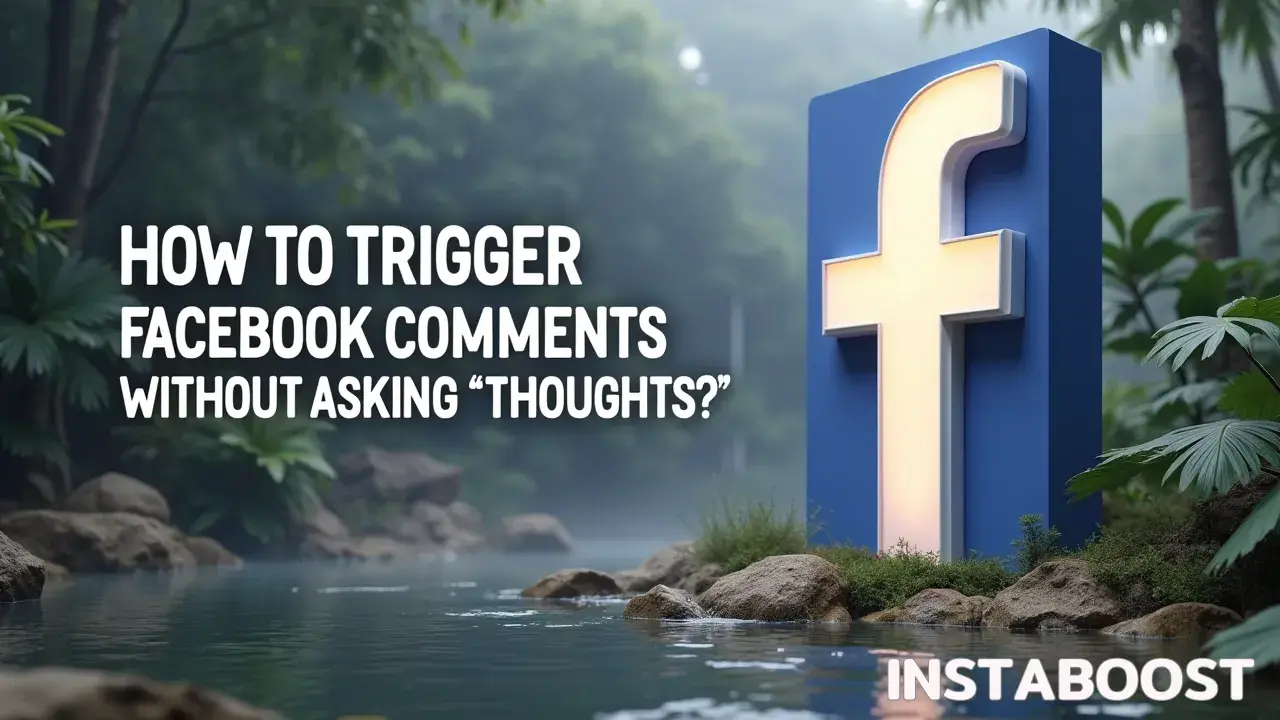How Can Facebook Comments Be Sparked Without Saying “Thoughts?”
Prompting richer discussion starts by giving people something specific to react to. Use original engagement strategies like a crisp dilemma, a mini story with a clear turning point, or a single surprising stat that invites perspective. Frame a direct, open question tied to the post’s content, and narrow the scope so replies feel easy and relevant. The smart path is to test which prompts spark meaningful back-and-forth and refine based on response quality.
Why “Thoughts?” Falls Flat: The Real Dynamics Behind Facebook Engagement
When someone posts "Thoughts?" on Facebook, it feels a bit like leaving a plate of snacks out and waiting to see if anyone takes one – sometimes you get a few likes or a comment, but it rarely goes anywhere. Posts that actually lead to real conversations usually do something more – maybe they ask about a shared memory, bring up something people are curious about, or invite folks to talk about their own experience.
Most people scroll through so many requests for engagement every day that anything that feels generic is easy to pass by. What seems to work better is sharing something specific: a photo from a weird moment, a story that makes people pause, or a question that connects to what’s actually happening in people’s lives.
Most people scroll through so many requests for engagement every day that anything that feels generic is easy to pass by. What seems to work better is sharing something specific: a photo from a weird moment, a story that makes people pause, or a question that connects to what’s actually happening in people’s lives.
Facebook itself seems to notice when a post starts a real back-and-forth and will show those posts to more people, compared to ones that just gather a few one-word replies. There’s a whole art to this – sometimes it helps to skim a quick list of Facebook promotion essentials and then reimagine what actually makes a post interesting.
So, getting more people involved isn’t only about collecting comments – it’s really about making a place where people want to say something and come back to see what others have said, which also keeps your posts from sinking out of sight. Whether it’s for your own page, a business like INSTABOOST, or a group you run, it helps to think about what draws you into a conversation and try to bring that same feeling into your posts.
Real engagement happens when people feel like what they say matters, not when they’re going through the motions of responding to a prompt. Figuring out different ways to invite comments takes a bit more time, but it’s probably worth paying attention to what gets you to join in too.
So, getting more people involved isn’t only about collecting comments – it’s really about making a place where people want to say something and come back to see what others have said, which also keeps your posts from sinking out of sight. Whether it’s for your own page, a business like INSTABOOST, or a group you run, it helps to think about what draws you into a conversation and try to bring that same feeling into your posts.
Real engagement happens when people feel like what they say matters, not when they’re going through the motions of responding to a prompt. Figuring out different ways to invite comments takes a bit more time, but it’s probably worth paying attention to what gets you to join in too.

What Actually Works: Observations from the Front Lines
We actually started getting more meaningful responses when we stopped following every so-called “best practice.” Instead of ending posts with a quick “Thoughts?” we began to put more care into the questions we asked – thinking about the way we phrased things, the timing, and whether our questions connected to something people actually cared about. That made a bigger difference than I expected. Whenever we touched on things people already had opinions about, like an old debate or something everyone remembered, the comments would pick up. There was a post – “Who else remembers the great bagel debate of 2017?” – that brought in five times the usual replies, way more than anything with a generic prompt.
We also started watching when people were online. Posting at those times often doubled the real conversations we saw. Adding a good photo or a simple poll helped too; sometimes the right image was enough to get people talking, even if the caption was short.
And sometimes, all it took was the right moment or the right post for us to gain new Facebook page supporters almost by accident. It turns out, what matters most is making people feel like they’re part of a group instead of just asking them to weigh in. When we shared a story that felt real or made the question feel like a shared joke, people responded more naturally. That’s the approach we take at INSTABOOST – helping brands move away from formulaic engagement and focus on conversations people actually want to have. If you want real back-and-forth on Facebook, it’s worth putting in that extra bit of care, instead of dropping a “Thoughts?” and hoping for the best. The comments start to look different – more genuine, less forced. The feed feels less like a list of asks and more like a place people want to stay for a while.
Crafting the Comment Magnet: How to Frame for Real Replies
It’s easy to assume that clever posts will grab more attention, but it’s often the ones that are a little more thoughtful that actually get people talking. The Facebook threads that people really return to usually start with a genuine interest in what matters to others, not with some strategy for going viral. So instead of ending a post with “Thoughts?” and hoping for the best, it can help to ask something specific that people might actually want to answer.
For instance, mentioning the whole pineapple-on-pizza thing and asking what side people were on, or bringing up a joke that everyone in the area knows – those little details make it easier for people to see themselves in the conversation. Simple things like posting when you know your friends are likely to be scrolling, or using a photo that means something to your group, can change how people respond too. Sometimes, a post even gets noticed with post likes from unexpected corners, which just adds to the feeling that the conversation is really resonating. Posts that feel like an open invitation to a real conversation, not just a question tossed out for anyone, tend to get more honest replies.
If it feels like you’re actually interested in what someone might say – and that their answer could shape what happens next – they’re more likely to take the time. That’s really what makes people want to join in: when a post feels like it’s for them, not just another message thrown out into the feed. Getting past the routine “Thoughts?” and spending a bit more time framing what you want to talk about really does seem to matter, at least from what I’ve seen.















